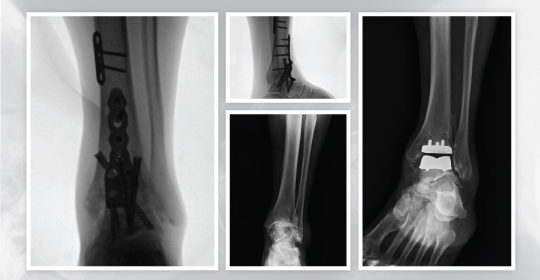ANKLE ARTHRITIS TREATMENT
Normal joints are covered by healthy cartilage which provides a smooth surface for bones to articulate and move gently. Once the cartilage is lost, it does not grow normally again; instead, a different type of cartilage is formed which does not present the same properties. Osteoarthritis is the final process in which normal cartilage is worn away from the joint surface which leads to pain and reduction in movement.
Ankle arthritis usually presents after trauma. Less commonly, it can result from normal wear of the cartilage.
Ankle arthritis can be managed non-surgically with a combination of medication, orthotics and injections with corticosteroids or platelet rich plasma (PRP). In the situation that the pain does not subside, and it becomes debilitating, surgery can be offered.

